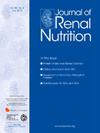Application of ChatGPT to Support Nutritional Recommendations for Dialysis Patients – A Qualitative and Quantitative Evaluation
IF 3.4
3区 医学
Q2 NUTRITION & DIETETICS
引用次数: 0
Abstract
Objectives
The rising diversity of food preferences and the desire to provide better personalized care provide challenges to renal dietitians working in dialysis clinics. To address this situation, we explored the use of a large language model, specifically, ChatGPT using the GPT-4 model (openai.com), to support nutritional advice given to dialysis patients.
Methods
We tasked ChatGPT-4 with generating a personalized daily meal plan, including nutritional information. Virtual “patients” were generated through Monte Carlo simulation; data from a randomly selected virtual patient were presented to ChatGPT. We provided to ChatGPT patient demographics, food preferences, laboratory data, clinical characteristics, and available budget, to generate a one-day sample menu with recipes and nutritional analyses. The resulting daily recipe recommendations, cooking instructions, and nutritional analyses were reviewed and rated on a five-point Likert scale by an experienced renal dietitian. In addition, the generated content was rated by a renal dietitian and compared with a U. S. Department of Agriculture–approved nutrient analysis software. ChatGPT also analyzed nutrition information of two recipes published online. We also requested a translation of the output into Spanish, Mandarin, Hungarian, German, and Dutch.
Results
ChatGPT generated a daily menu with five recipes. The renal dietitian rated the recipes at 3 (3, 3) [median (Q1, Q3)], the cooking instructions at 5 (5,5), and the nutritional analysis at 2 (2, 2) on the five-point Likert scale. ChatGPT's nutritional analysis underestimated calories by 36% (95% CI: 44-88%), protein by 28% (25-167%), fat 48% (29-81%), phosphorus 54% (15-102%), potassium 49% (40-68%), and sodium 53% (14-139%). The nutritional analysis of online available recipes differed only by 0 to 35%. The translations were rated as reliable by native speakers (4 on the five-point Likert scale).
Conclusion
While ChatGPT-4 shows promise in providing personalized nutritional guidance for diverse dialysis patients, improvements are necessary. This study highlights the importance of thorough qualitative and quantitative evaluation of artificial intelligence–generated content, especially regarding medical use cases.
应用 ChatGPT 支持透析患者的营养建议--定性和定量评估。
目的:对于肾脏病营养师来说,食物偏好的多样性和个性化护理的需求是一项挑战。我们对 ChatGPT-4 进行了探索,以支持为透析患者提供营养建议:在这项模拟研究中,我们要求 ChatGPT-4 生成包括营养信息在内的个性化每日膳食计划:研究使用蒙特卡洛模拟生成的虚拟 "患者":干预措施:我们向 ChatGPT 提供了患者的数据:我们向 ChatGPT 提供了患者的人口统计数据、饮食偏好、实验室数据、临床特征和可用预算,以生成一份包含食谱和营养分析的一日示例菜单。生成的内容由肾脏营养师评分,并与美国农业部批准的营养分析软件进行比较。ChatGPT 还分析了网上发布的两份食谱的营养信息。我们还要求将输出结果翻译成西班牙语、普通话、匈牙利语、德语和荷兰语。主要结果指标:结果指标为 ChatGPT 营养分析的准确性、食谱和烹饪指导的质量(五点李克特量表)以及定量营养分析:结果:ChatGPT 生成了一份包含五种食谱的每日菜单。肾脏营养师对食谱的评分为 3 (3,3) [中位数 (Q1, Q3)],对烹饪指导的评分为 5 (5,5),对营养分析的五点李克特量表评分为 2 (2,2)。ChatGPT 的营养分析低估了 36% 的卡路里(95% CI:44-88%)、28% 的蛋白质(25-167%)、48% 的脂肪(29-81%)、54% 的磷(15-102%)、49% 的钾(40-68%)和 53% 的钠(14-139%)。网上菜谱的营养分析差异仅为 0 至 35%。母语人士对翻译的评分为可靠(在五点李克特量表中为 4 分):尽管 ChatGPT-4 在为不同的透析患者提供个性化营养指导方面显示出了前景,但仍有必要加以改进。这项研究强调了对人工智能生成的内容进行全面定性和定量评估的重要性,尤其是在医疗用例方面。
本文章由计算机程序翻译,如有差异,请以英文原文为准。
求助全文
约1分钟内获得全文
求助全文
来源期刊

Journal of Renal Nutrition
医学-泌尿学与肾脏学
CiteScore
5.70
自引率
12.50%
发文量
146
审稿时长
6.7 weeks
期刊介绍:
The Journal of Renal Nutrition is devoted exclusively to renal nutrition science and renal dietetics. Its content is appropriate for nutritionists, physicians and researchers working in nephrology. Each issue contains a state-of-the-art review, original research, articles on the clinical management and education of patients, a current literature review, and nutritional analysis of food products that have clinical relevance.
 求助内容:
求助内容: 应助结果提醒方式:
应助结果提醒方式:


